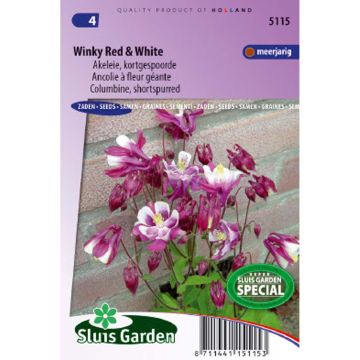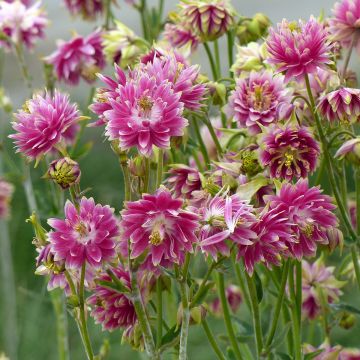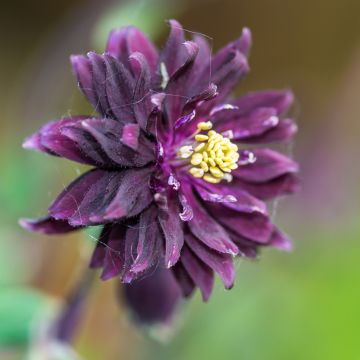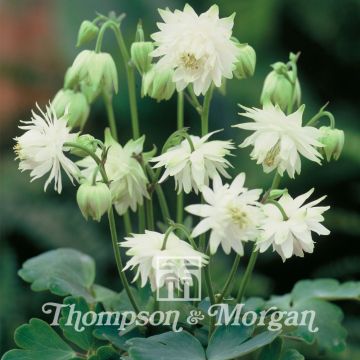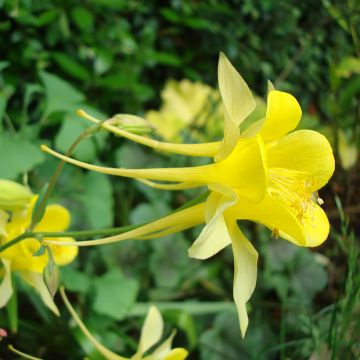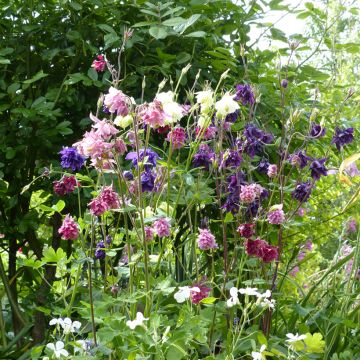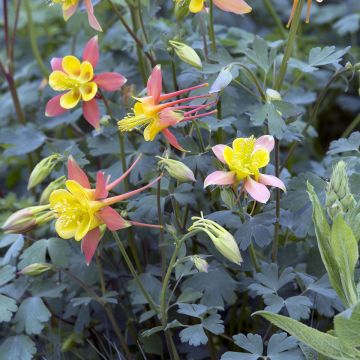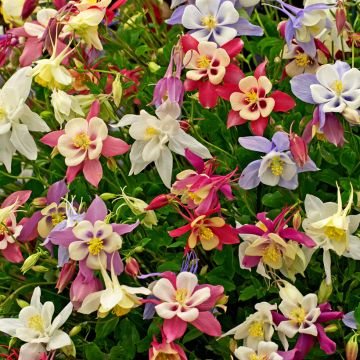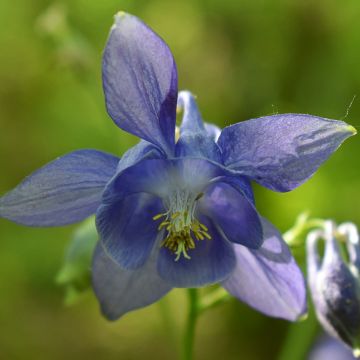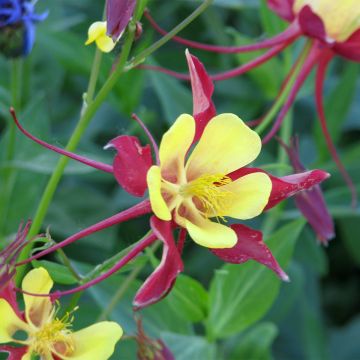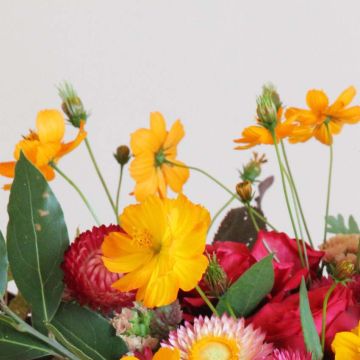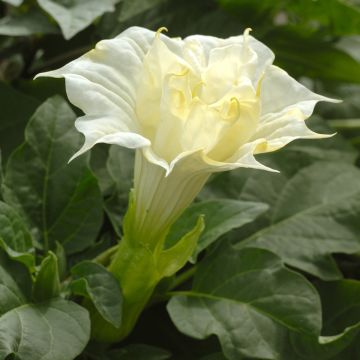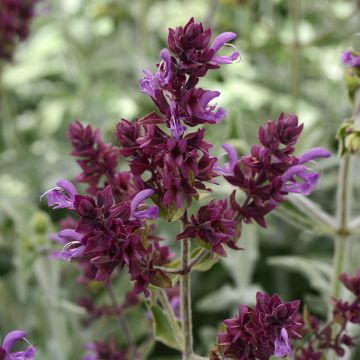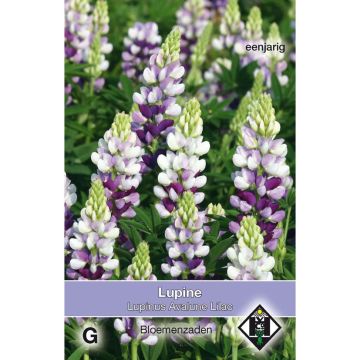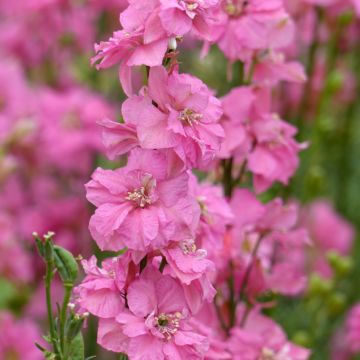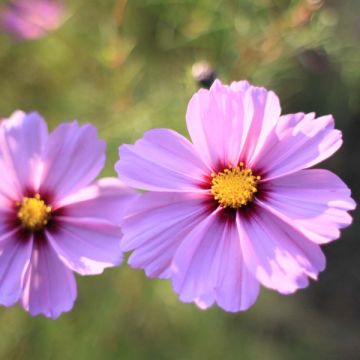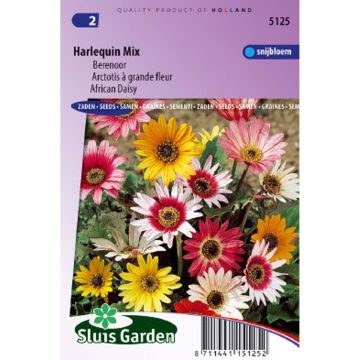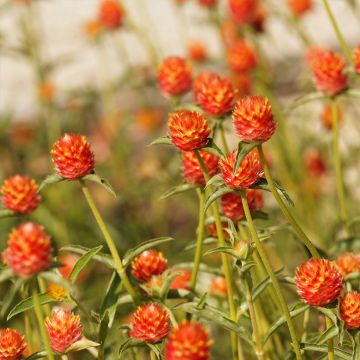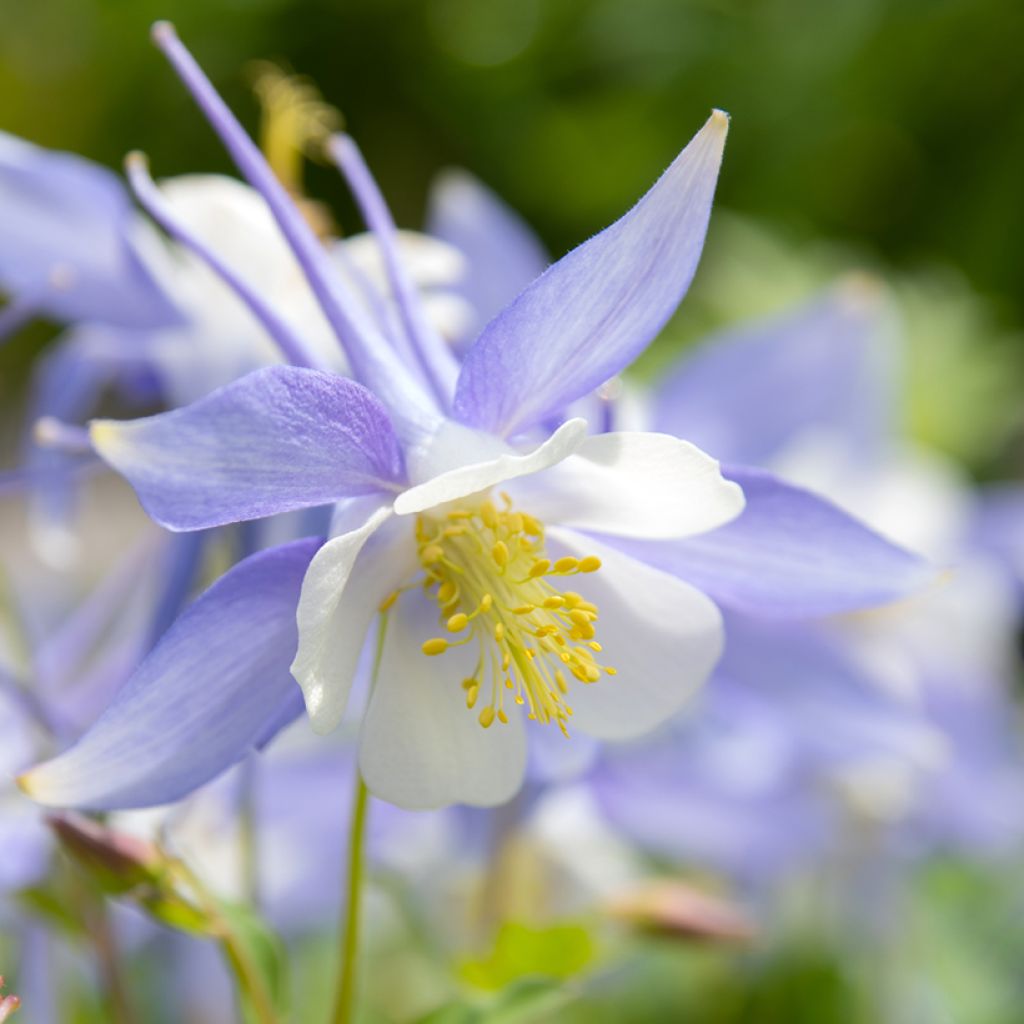

Aquilegia caerulea - Columbine
Aquilegia caerulea - Columbine
Aquilegia caerulea
Colorado Blue Columbine, Rocky Mountain Columbine
This item cannot be shipped to the selected country
Dispatch by letter from €3.90
More information
Schedule delivery date,
and select date in basket
This plant carries a 6 months recovery warranty
More information
We guarantee the quality of our plants for a full growing cycle, and will replace at our expense any plant that fails to recover under normal climatic and planting conditions.
Seed-only orders are dispatched by sealed envelope. The delivery charge for seed-only orders is €3.90.

Does this plant fit my garden?
Set up your Plantfit profile →
Description
Aquilegia caerulea is a simple columbine, but it is undoubtedly one of the most beautiful. Native to the Rocky Mountains of the USA, it displays a rustic character and an upright and bushy habit. For several weeks starting in spring, it offers bright flowers, ranging from light blue to deep blue, sometimes bicoloured, with an inner corolla of white petals around a golden stamen heart. A short-lived perennial, it easily self-seeds and is easy to grow in any well-drained but moist soil.
The Blue Columbine is a perennial plant of the Ranunculaceae family, native to North America and the emblem of the State of Colorado. It grows specifically in the mountainous areas of southern Montana to New Mexico and western Idaho and Arizona, from east to west. This herbaceous plant has an upright and straight habit. It measures from 20 to 60 cm (7.9 to 23.6 in) tall. In late spring and early summer, large pendulous flowers appear, measuring 6 to 10 cm (2.4 to 3.9 in) in diameter, carried by branching peduncles. They are equipped with long, horny spurs. Often bicoloured, they combine white and deep lavender blue. Sometimes a few late-blooming plants can be observed in autumn. The deciduous bluish-green foliage is quite decorative, and the cut of the basal leaves gives the plant a sense of lightness. Flowering reaches its peak after 2 or 3 years of growth. This plant does not live very long but it easily self-seeds in the garden.
Columbines were already cultivated in the Middle Ages, and cottage gardens have kept this tradition alive. Compact and discreet, they are essential in mixed borders where they will bring lightness and whimsy. They can be planted in many different areas of the garden, taking care to leave a space of 30 cm (11.8 in) around each plant: in the middle of a perennial bed, in a border, at the base of bushes, on the edge of a woodland, or on a slope. The Blue Columbine is magnificent in cool rockeries. Do not hesitate to pick them when they are barely open to make beautiful bouquets. In flower beds with a 'cottage garden' theme, they can be combined with all kinds of perennials, such as Foxgloves, Bleeding Hearts, or Peach-leaved Bellflowers.
Report an error about the product description
Flowering
Foliage
Plant habit
Botanical data
Aquilegia
caerulea
Ranunculaceae
Colorado Blue Columbine, Rocky Mountain Columbine
Cultivar or hybrid
Other Aquilegia Colombine Seeds
Planting and care
Sow from spring to mid-summer in a light and well-draining compost, barely covering the seeds with the compost. Germination can take 1 to 3 months at 15-21 °C (59-69.8 °F). To speed up the process, enclose the seedlings in a polythene bag and leave them in the refrigerator for 3 weeks. Regularly inspect the seedlings and remove them from the refrigerator if they start to germinate. Then place the seedlings in a warmer location, at 15-21 °C (59-69.8 °F). Transplant the young plants when they are large enough to handle, into 8 cm (3.1 in) pots. Move the plants to a cold greenhouse, or bury the pots up to the rim in a protected outdoor site. Transplant the young plants to their final location in autumn.
Aquilegia cearulea prefers well-drained, moist, and rich soils, and prefers a semi-shaded, or non-scorching sunny exposure. It tolerates limestone well. Very resistant to diseases, it can, however, sometimes be attacked by aphids and certain caterpillars. Attacks by snails and slugs are to be feared on young plants, which they are fond of. Aquilegias easily self-seed in the garden, so it is possible to leave a few flower stalks after flowering so that they produce seeds. But it is advisable to keep only the stems of the most vigorous plants as this operation exhausts the plant and reduces its lifespan, which is rather short for a perennial at around 3 to 4 years.
Sowing period
Intended location
-
, onOrder confirmed
Reply from on Promesse de fleurs
Flower seeds
Haven't found what you were looking for?
Hardiness is the lowest winter temperature a plant can endure without suffering serious damage or even dying. However, hardiness is affected by location (a sheltered area, such as a patio), protection (winter cover) and soil type (hardiness is improved by well-drained soil).

Photo Sharing Terms & Conditions
In order to encourage gardeners to interact and share their experiences, Promesse de fleurs offers various media enabling content to be uploaded onto its Site - in particular via the ‘Photo sharing’ module.
The User agrees to refrain from:
- Posting any content that is illegal, prejudicial, insulting, racist, inciteful to hatred, revisionist, contrary to public decency, that infringes on privacy or on the privacy rights of third parties, in particular the publicity rights of persons and goods, intellectual property rights, or the right to privacy.
- Submitting content on behalf of a third party;
- Impersonate the identity of a third party and/or publish any personal information about a third party;
In general, the User undertakes to refrain from any unethical behaviour.
All Content (in particular text, comments, files, images, photos, videos, creative works, etc.), which may be subject to property or intellectual property rights, image or other private rights, shall remain the property of the User, subject to the limited rights granted by the terms of the licence granted by Promesse de fleurs as stated below. Users are at liberty to publish or not to publish such Content on the Site, notably via the ‘Photo Sharing’ facility, and accept that this Content shall be made public and freely accessible, notably on the Internet.
Users further acknowledge, undertake to have ,and guarantee that they hold all necessary rights and permissions to publish such material on the Site, in particular with regard to the legislation in force pertaining to any privacy, property, intellectual property, image, or contractual rights, or rights of any other nature. By publishing such Content on the Site, Users acknowledge accepting full liability as publishers of the Content within the meaning of the law, and grant Promesse de fleurs, free of charge, an inclusive, worldwide licence for the said Content for the entire duration of its publication, including all reproduction, representation, up/downloading, displaying, performing, transmission, and storage rights.
Users also grant permission for their name to be linked to the Content and accept that this link may not always be made available.
By engaging in posting material, Users consent to their Content becoming automatically accessible on the Internet, in particular on other sites and/or blogs and/or web pages of the Promesse de fleurs site, including in particular social pages and the Promesse de fleurs catalogue.
Users may secure the removal of entrusted content free of charge by issuing a simple request via our contact form.
The flowering period indicated on our website applies to countries and regions located in USDA zone 8 (France, the United Kingdom, Ireland, the Netherlands, etc.)
It will vary according to where you live:
- In zones 9 to 10 (Italy, Spain, Greece, etc.), flowering will occur about 2 to 4 weeks earlier.
- In zones 6 to 7 (Germany, Poland, Slovenia, and lower mountainous regions), flowering will be delayed by 2 to 3 weeks.
- In zone 5 (Central Europe, Scandinavia), blooming will be delayed by 3 to 5 weeks.
In temperate climates, pruning of spring-flowering shrubs (forsythia, spireas, etc.) should be done just after flowering.
Pruning of summer-flowering shrubs (Indian Lilac, Perovskia, etc.) can be done in winter or spring.
In cold regions as well as with frost-sensitive plants, avoid pruning too early when severe frosts may still occur.
The planting period indicated on our website applies to countries and regions located in USDA zone 8 (France, United Kingdom, Ireland, Netherlands).
It will vary according to where you live:
- In Mediterranean zones (Marseille, Madrid, Milan, etc.), autumn and winter are the best planting periods.
- In continental zones (Strasbourg, Munich, Vienna, etc.), delay planting by 2 to 3 weeks in spring and bring it forward by 2 to 4 weeks in autumn.
- In mountainous regions (the Alps, Pyrenees, Carpathians, etc.), it is best to plant in late spring (May-June) or late summer (August-September).
The harvesting period indicated on our website applies to countries and regions in USDA zone 8 (France, England, Ireland, the Netherlands).
In colder areas (Scandinavia, Poland, Austria...) fruit and vegetable harvests are likely to be delayed by 3-4 weeks.
In warmer areas (Italy, Spain, Greece, etc.), harvesting will probably take place earlier, depending on weather conditions.
The sowing periods indicated on our website apply to countries and regions within USDA Zone 8 (France, UK, Ireland, Netherlands).
In colder areas (Scandinavia, Poland, Austria...), delay any outdoor sowing by 3-4 weeks, or sow under glass.
In warmer climes (Italy, Spain, Greece, etc.), bring outdoor sowing forward by a few weeks.

































